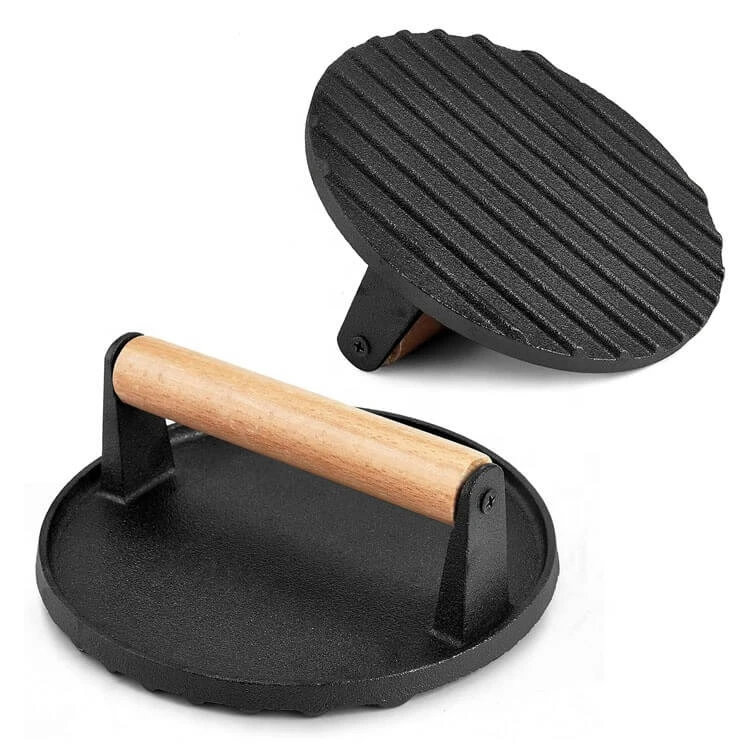
Exploring the Versatility of Cast Iron Camp Ovens for Outdoor Cooking Adventures
Exploring the World of Cast Iron Camp Ovens
For outdoor enthusiasts and culinary adventurers alike, few items in the cooking toolkit are as versatile and beloved as the cast iron camp oven. This sturdy cooking implement has been a staple in outdoor cooking for generations, capable of transforming simple ingredients into hearty, delicious meals. Whether you are cooking over an open fire or on a camping stove, a cast iron camp oven provides both functionality and a sense of nostalgia that few other cooking tools can match.
The History of Cast Iron Cookware
The use of cast iron cookware dates back to ancient times, with the earliest forms originating in China around 220 AD. However, it wasn’t until the 18th century that cast iron gained popularity in North America. Pioneers relied on robust cast iron pots and pans for their durability and ability to retain heat, making them ideal for cooking in the outdoors. Cast iron camp ovens, often designed with a heavy lid and thick walls, became essential for baking, stewing, and roasting, just as they would in a traditional kitchen.
Design and Features
A typical cast iron camp oven features a heavy construction that promotes even heat distribution, ensuring that food is cooked uniformly. The most recognizable design includes three short legs on the bottom, allowing for placement over coals or direct flame. The lid usually has a raised edge to hold coals, allowing for heat to circulate for baking purposes. This combination of features makes it uniquely suited for various cooking methods—baking bread, roasting meats, or simmering stews.
The natural non-stick surface of seasoned cast iron is another remarkable feature. With proper maintenance—regular seasoning and cleaning with hot water—users can create a durable non-stick cooking surface that enhances flavors while requiring minimal oil. This makes it a healthier option for those who may be concerned about excessive fats in cooking.
Cooking Techniques
cast camp oven

Using a cast iron camp oven requires some knowledge of cooking techniques, but with practice, it can yield impressive results. One popular method is the “Dutch oven” technique, where the camp oven is placed over and under hot coals. The heat from above and below allows for even cooking and is perfect for baking cornbread or casseroles.
Another technique is slow cooking. By placing a stew or chili mixture in the camp oven with a lid on and setting it over low heat, food can simmer for hours, developing deep, rich flavors that are truly comforting. Camp ovens are also versatile enough to be used with a variety of fuel sources, including charcoal, wood, and gas.
Recipes to Try
If you are looking to experiment with your cast iron camp oven, consider trying some classic recipes. A simple yet satisfying option is a Dutch oven bread. Combine flour, water, yeast, and salt, allow it to rise, and then cook it in your camp oven over coals for a delightful, crusty loaf.
For a hearty meal, you can prepare a one-pot chili using beans, meat, tomatoes, and spices. Let it simmer for a few hours, and you'll have a warming dish perfect for sharing around the campfire. Don’t forget dessert; a peach cobbler cooked in the camp oven is a sweet treat that will end your outdoor meal on a high note.
Conclusion
The charm of cooking with a cast iron camp oven lies not just in the meals it produces but also in the traditions it carries. As you gather with friends and family around a campfire, the aromas of carefully prepared food wafting through the air, you’ll appreciate the simplicity and warmth that this time-honored cooking method provides. Whether you’re a seasoned outdoor chef or a beginner, the cast iron camp oven stands ready to elevate your culinary experience in the great outdoors. So grab your ingredients, light up the fire, and let the cast iron do the magic!
-
Season Cast Iron Perfectly with GPT-4 Turbo TipsNewsAug.01,2025
-
High Quality Cast Iron Cookware - Baixiang County Zhongda MachineryNewsAug.01,2025
-
Premium Cast Iron Pan: Durable & Perfect HeatNewsAug.01,2025
-
High Quality Kitchen Durable Black Round Cast Iron Cookware Pancake Crepe Pan-Baixiang County Zhongda Machinery Manufacturing Co., Ltd.NewsAug.01,2025
-
Cast Iron Cookware - Baixiang County Zhongda Machinery | Nonstick, Heat ResistanceNewsAug.01,2025
-
High Quality Kitchen Durable Black Round Cast Iron Cookware - Baixiang County Zhongda Machinery | Non-Stick, Heat Retention, DurableNewsJul.31,2025


